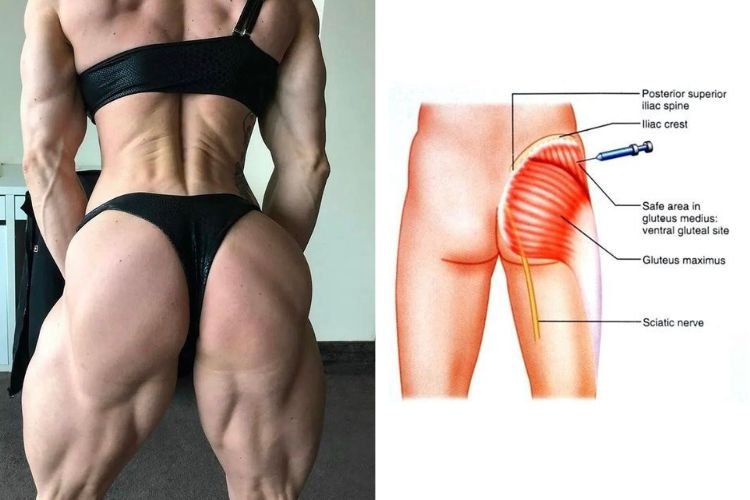When Diets Become Dangerous?
When Diets Become Dangerous - What Are the Risks of a Hard Diet for Women?

Women and men alike put their bodies in a state of emergency by following a strict diet. The body reacts to an "insufficient" energy supply not only with the desired breakdown of body fat, but also soon restricts other functions in order to be able to work in an energy-saving manner. So general fatigue, weakness, or extended regeneration times are common side effects of a diet, but in most cases they are justifiable and can be controlled through a moderate energy deficit and adapted training and everyday behavior.
The further a diet progresses or the greater the calorie deficit, the more likely it is that other restrictions such as circulatory weakness, dehydration, electrolyte disorders and micronutrient deficiencies, as well as increased susceptibility to injury and lower resting energy consumption become. Furthermore, the likelihood of changes in blood sugar, lipid profile and immune functions increases.
In women in particular, however, a high energy deficit has an even more pronounced effect on the state of health, so that a lack of total energy and nutrients has an impact on the hormonal balance and thus on the female cycle.
The athletic triad: When the body fat percentage in women is too low?
A symptom complex that can often be observed in highly trained women is the so-called Female Athlete Triad (FAT), which is made up of the symptoms of energy deficit, reduced bone density and disturbed menstruation. It is important to note that the individual symptoms do not occur independently of one another, but are causally related and have the energy deficit as a common trigger.
Diet can have a noticeable effect on a woman's cycle. The energy deficit reduces the release of anabolic hormones such as insulin and growth hormones or growth factors such as IGF-1 and at the same time increases the production of cortisol. These hormonal changes affect the hypothalamus and cause a reduced release of the hormones GnRH (gonadotropin releasing hormone) and thus also of the gonadotropin LH (luteinizing hormone). The insufficient concentration of the gonadotropins prevents the cycle. This can have other consequences, such as decreased bone density.
In this way, a permanent strong undersupply of calories and nutrients not only leads to muscle deficits, but also to lower bone density, both directly via lower intake of calcium and vitamin D and indirectly via the reduced release of metabolically active hormones and growth factors. In addition, the menstrual disorder causes a lack of estrogen, which among other things also has the effect of increasing the absorption of calcium. Estrogen is also a natural osteoclast inhibitor that works. That means it slows down bone loss.
The female triad is particularly often associated with a pathological disorder of eating behavior, which is particularly common in aesthetic sports athletes. More than 40 percent of elite female athletes have an eating disorder and thus a risk factor for the development of a female triad. In contrast, the American College of Sports Medicine found that college gymnasts had an eating disorder rate of 62 percent.
Of course, not every diet becomes an eating disorder. However, the lower the energy intake and the more restrictive the eating behavior, the higher the risk. Long diet phases are the greatest risk factors for developing abnormal eating habits, especially in women.
How high a maximum calorie deficit can be in order to avoid undesirable side effects of a diet cannot be answered across the board. The minimum intake is based on the individual total energy requirement of a person and is therefore dependent on training and activity.
In this context, the energy availability indicates how much food energy is left for the maintenance of physiological processes after the deduction of the energy that is used for physical activity. For those who prefer to work with formulas than with words, the energy availability is summarized as follows.
Example:
EEE: 1000 Kcal / day
EI: 3500 Kcal / day
EA: 2500 Kcal / day
Energy Availability = EA
Exercise Energy Expenditure = EEE
Energy intake = EI
If the energy intake (EI) remains the same, a higher training volume reduces the available energy (EA), so that the probability of harmful diet consequences increases with increasing training volume. It should be noted that the calculation of the performance expenditure (EEE) takes into account not only the energy expenditure of the training but also everyday movement. A total of 1000 Kcal per day can be reached quickly. The difference to the basal metabolic rate is that it describes how much energy your body needs to maintain normal body functions.
Since the energy consumption is directly dependent on the amount of metabolically active lean mass, a comparable quotient can be formed:
Example athlete:
Body weight: 60 kg
Lean mass (FFM): 49 kg
In this calculation, the athlete has an energy availability of 51 Kcal per kilogram of fat-free mass. This value is therefore in the low-risk range.
In the range of 30 to 45 Kcal / Kg FFM one speaks of a sub clinically low energy availability in women. This can be tolerated over short periods of time, but requires a balanced nutritional concept.
With the same lean mass and performance (EEE), an energy consumption (EI) of 2700 Kcal would already correspond to an EA of only 35 Kcal / Kg FFM. This should make it clear that with a high energy consumption, even supposedly high amounts of calories can result in a low EA. Below 30 Kcal / Kg FFM one speaks of a clinically low energy availability with the risk of the health hazards mentioned.
In this example calculation, the limit value of 30 Kcal / Kg FFM would be 2470 Kcal with an output of 1000 Kcal / day. In this example, a diet with 1500 Kcal or less per day would result in a value of 10 Kcal / Kg FFM, which is clearly too little. A drop from 45 to 30 Kcal / Kg FFM can lead to menstrual disorders after just 5 days.
Conclusion:
A high energy deficit can cause a variety of health problems in women. The cause of this is always too great a lack of energy. An energy availability of less than 30 Kcal / Kg FFM * day can lead to health damage after a short time. The better alternative is always a patient diet. For this reason, women in particular should allow themselves more time for diets so that the desired results can be achieved sooner or later, even with lower daily deficits.
Articles Drugs

Trenbolone enanthate is a powerful anabolic steroid. Trenbolone Enanthate is ideal for increasing lean body mass and burning fat as it remains in the body for up to 5 days from the time of administration and releases more slowly than Acetate.

After much research and experience, it is safe to say that the glutenous maxims muscles are indeed the best place to inject steroids for optimal results.

Two popular options among athletes and bodybuilders are trenbolone and anavar. Let's delve into the details of these powerful yet controversial substances that have been gaining attention in the fitness world.
PandaRoids Reviews
Please leave your review on products or service below.
For discounts, please contact us


